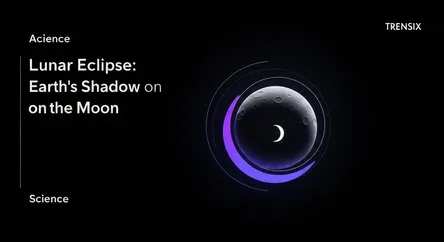Science
Lunar Eclipse: Earth's Shadow on the Moon

Discover what happens when Earth passes between the Sun and Moon, casting a shadow that can turn our lunar neighbor a dramatic reddish color.
What is it?
A lunar eclipse is a celestial event that occurs when the Moon passes directly behind Earth and into its shadow (umbra). This alignment can only happen during a full moon when the Sun, Earth, and Moon are perfectly aligned. During a total lunar eclipse, Earth's shadow completely covers the Moon, often giving it a reddish hue known as a "Blood Moon." This color is caused by sunlight filtering through Earth's atmosphere, which scatters blue light and bends red light toward the Moon. There are also partial and penumbral eclipses, where only part of the Moon is shadowed.
Why is it trending?
Lunar eclipses capture public imagination because they are visually stunning and relatively accessible astronomical events. Unlike solar eclipses, they are safe to view with the naked eye and are visible to an entire hemisphere of the Earth. Each upcoming eclipse generates significant media coverage and social media buzz, with space agencies like NASA providing viewing guides and live streams. The dramatic appearance, especially of a "Blood Moon," makes for spectacular photos, turning the event into a shared global experience and a trending topic online.
How does it affect people?
While lunar eclipses have no direct physical effect on humans, they hold deep cultural and scientific significance. Historically, many cultures viewed them as powerful omens or key mythological events. Today, they serve as a major driver for public engagement in science and astronomy, encouraging people of all ages to look up at the night sky. For scientists, they offer opportunities to study Earth's atmosphere by analyzing the sunlight that passes through it. They are a communal event, bringing people together for sky-watching parties and fostering a collective sense of wonder about our place in the universe.